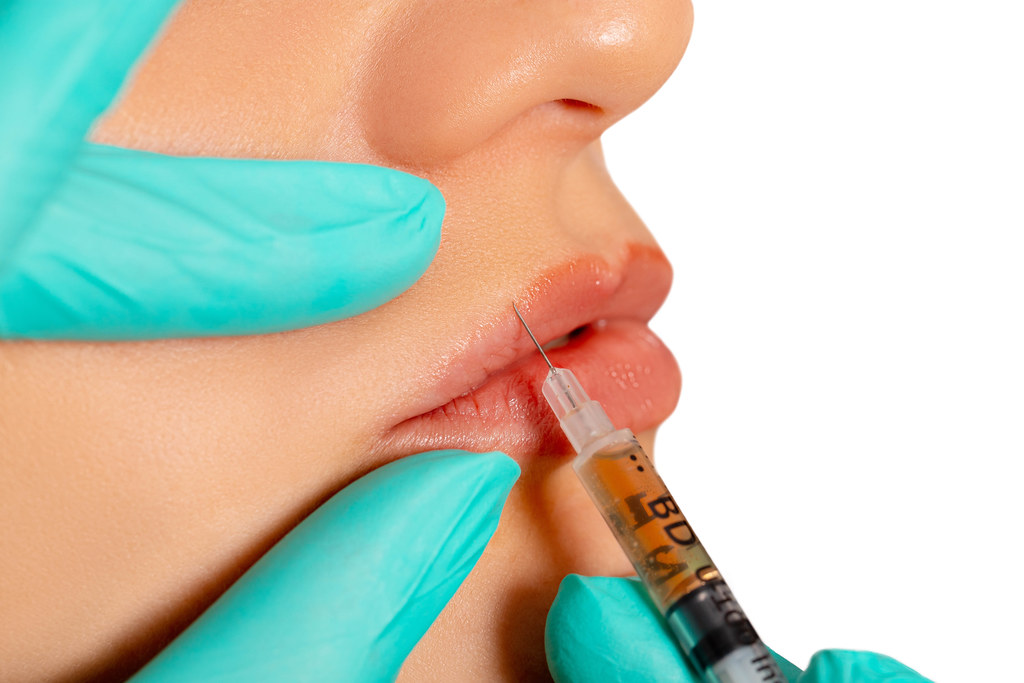
Dermal filler procedures are exceptionally popular these days. While being used all over the world, they help millions of people all over the world to prolong their useful appearance for a substantial time period.
But is it really worth getting dermal fillers? In order to find an answer to this question, go through the below-mentioned information. Let’s delve into the world of dermal fillers together!
What Are Dermal Fillers?
Dermal fillers (also known as facial or soft tissue fillers) are injectable products that have a wide range of aesthetic indications. Their primary aim is to rejuvenate and enhance the overall appearance of a patient.
What Are the Main Dermal Filler Types?
Depending on the main active component in their composition, dermal fillers might be divided into several types. Below, you will find a short overview of the main ones.
Hyaluronic Acid Fillers
Hyaluronic acid fillers have strong hydrating properties. They attract moisture to skin tissues and, therefore, make them look elastic, shining, and glowing. In other words, they help a patient to acquire a more youthful appearance by means of profoundly rejuvenating their skin.
The most well-known hyaluronic acid filler brands are Belotero, Fillmed, Juvederm, Restylane, Saypha, and many more. They all function as effective and long-lasting cosmetic injectables that enhance the natural appearance of a patient.
Calcium Hydroxylapatite Fillers
Calcium hydroxylapatite fillers effectively accelerate collagen production. This way, they substantially improve the elasticity of the patients’ deeper skin layers and help them acquire a more attractive outlook.
Probably the most popular calcium hydroxylapatite filler brand is Radiesse. It functions as a solid substitution for any hyaluronic-acid-based filler since it also profoundly improves the natural glow of the skin.
Poly-L-lactic Acid Fillers
Poly-L-lactic fillers last a bit longer than hyaluronic acid and calcium hydroxylapatite ones. They are based on a synthetic but nevertheless fully biocompatible polymer that aims to activate the natural production of collagen.
The most widespread poly-L-lactic acid filler brand is Sculptra. It functions as an efficient injectable treatment that ensures a patient with the desired result by means of skin rejuvenation and enhancement.
What Are Facial Fillers Used For?
Any dermal filler procedure aims to enhance the overall appearance of a patient. More precisely, it might be used to treat a number of aesthetic problems, starting from wrinkles and ending with facial volume loss.
Based on their main indication, there exists a lip filler, a cheek filler, a tear trough filler, and so on. The below-mentioned information features a short overview of the main dermal filler types (in regard to their indications).
Fillers for Wrinkle Reduction
The vast majority of skin-enhancing injectables aim to soften wrinkles, folds, and fine lines of different intensities, such as:
- Nasolabial folds;
- Crow’s feet;
- Marionette lines;
- Smile lines;
- And so on.
Unlike Botox, which takes care of dynamic skin creases, dermal fillers primarily deal with static wrinkles.
Fillers for Lip Augmentation
There exists a special category of dermal fillers that are used to moisturize, plump, and contour lips. In other words, lip fillers are used to enhance the appearance of dehydrated and thin lips with a poorly defined contour.
Fillers for Facial Volume Restoration
One more aim of cosmetic injectables is to restore the lost volume of certain facial parts (for instance, cheeks). Dermal fillers might also promote facial symmetry by means of adding volume to certain areas.
Fillers for Other Indications
Apart from the above-mentioned indications, face fillers might also be used to treat dark circles and tear troughs in order to make a patient’s under-eye area smoother and more attractive.
As well cheek fillers might also be used for cheek augmentation. They aim to make the cheekbones more defined and, therefore, improve the overall appearance of facial features.
On top of that, plastic surgeons might use dermal fillers to improve the appearance of acne scars. In other words, they smooth skin tissues around the treatment area and, therefore, make scars less visible.
How Long Do Dermal Fillers Last?
Despite their long-lasting duration, the results from dermal filler injections are not permanent. Depending on the individual condition of a patient (such as their health condition, skin type, or age), they might last from a couple of months to several years.
The main reason why the effect of dermal fillers fades away with time is the fact that the human body naturally breaks down foreign substances after a certain time period. In other words, the human body metabolizes the molecules of dermal fillers unless a patient undergoes periodical touch-up treatments.
Are Dermal Fillers Safe?
A very short answer to the question of whether dermal fillers are safe is “Yes.” Under normal circumstances, cosmetic treatments that involve dermal filler injections do not cause any serious allergic reactions or complications.
However, one essential precondition that makes dermal filler injections safe is the fact that they should be performed exclusively by an experienced injector with a valid medical license. In other words, dermal fillers belong to skincare products intended for professional use.
What Side Effects Do Dermal Filler Solutions Cause?
Dermal fillers based on poly-L-lactic acid, calcium hydroxylapatite, or HA typically cause little to no side effects. At the same time, however, they might lead to the appearance of the following symptoms:
- Skin irritation around the area of the treatment (namely, redness, itching, or swelling);
- Bruising at the injection site;
- And so on.
The good news is that these side effects usually have a temporary character and tend to fade away on their own within several days after the treatment.
What Are the Contraindications to Dermal Filler Injections?
Due to the potential risks involved in the usage of dermal fillers, they are contraindicated under one of the following circumstances:
- Local infection around the intended injection site;
- Allergies;
- Serious health problems;
- Pregnancy or breastfeeding;
- And so on.
If a patient has any of the following contraindications to the administration of the dermal filler, the procedure should not be performed.
Do Dermal Filler Injections Hurt?
The injection of a dermal filler is a cosmetic procedure that causes little to no pain. The comfort of a patient is ensured by one of the following factors (or a combination of them):
- Some dermal fillers have prefilled lidocaine in their composition;
- Healthcare providers usually apply a topical numbing cream to the intended area of the treatment shortly before the procedure.
Therefore, dermal fillers are used to reduce wrinkles, restore lost facial volume, and augment lips in a comfortable and pain-free way.
Can Dermal Fillers Be Dissolved?
Any dermal filler can be dissolved with the help of hyaluronidase injection. It is a medical procedure that involves the administration of a special preparation beneath a patient’s skin in order to make the molecules of dermal fillers removed in an instant way.
So, just in case a healthcare provider injects too much filler beneath your skin or you are simply not satisfied with the result of the procedure, it might be fully reversed within a short period of time.
How Much Do Dermal Fillers Cost?
Nowadays, the administration of dermal fillers belongs to rather affordable procedures of plastic surgery. Depending on the geographical location, current appearance, and the desired results of a patient, a single injection might cost around $500.
The qualification of a healthcare provider, the brand of a dermal filler, the volume of a product in a syringe, and the involvement of an anesthetic of topical use also influence the price of the procedure. Only certified healthcare providers with valid medical licenses are eligible to buy dermal fillers online and locally.
Final Words
So, are dermal fillers worth it? Hopefully, the above-mentioned information has helped you to find your individual answer to this question. Remember, it is only up to you to decide whether to undergo a dermal filler injection or not!
Read more about Restylane Kysse vs Juvederm








